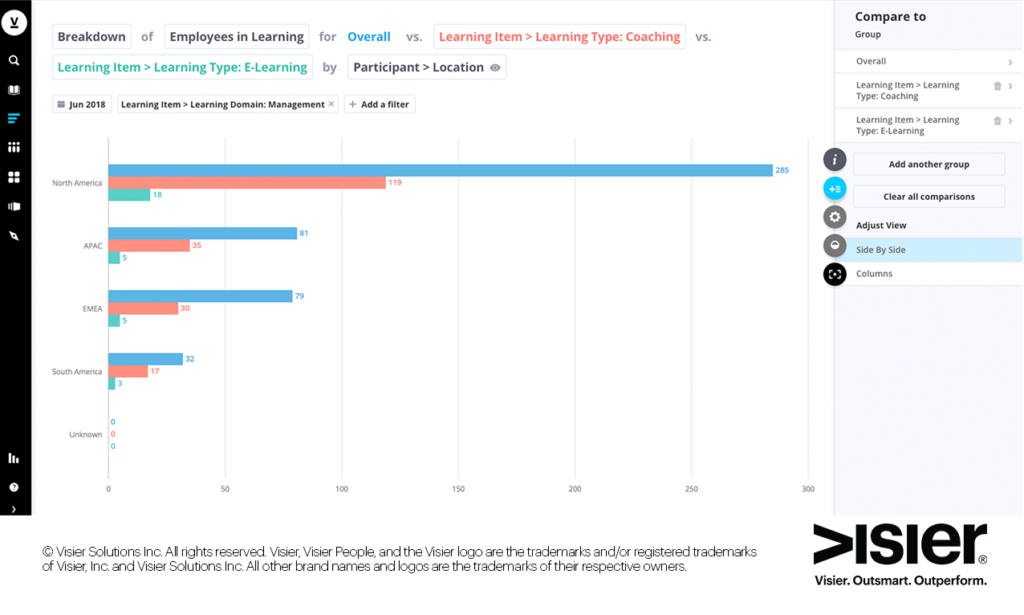3 Reasons to Analyze Your Training Programs for Early-Career Professionals
Here are three learnings that you can glean from analyzing your early-career professional training programs–and applying those insights.

Here are three learnings that you can glean from analyzing your early-career professional training programs–and applying those insights to both the new generations and the older ones.
Early-career professionals – a cohort made up of co-op students, apprentices, interns, and new graduates – are a great source of talent for organizations. Generation Z (born between 1995 and 2010) is beginning to replace the incumbent Millennials as the young professionals in the workplace, and this group is hungry to grow its skills and prove itself at organizations.
As millennials give way to Gen Z, learning and development leaders will find that what worked before may no longer hold true for their next crop of young employees. In fact, in a LinkedIn survey, 98% of L&D and human resources professionals said that Gen Z’s learning preferences will differ from previous generations’.
In order to adapt training programs – and satisfy Gen Z’s hunger to learn quickly and on its terms – L&D leaders should be tapping into learning analytics. Not only will in-depth analysis help you develop better early-career professional training programs, but you may also discover insights that drive better initiatives and outcomes for all your employees, regardless of their age or tenure.
It can be difficult to find answers to your most pressing workforce questions without the right data in hand. Finding insights that lead to better decision-making requires more than just reporting on learner satisfaction, enrollments, cost of training and learner demographics – the type of metrics most readily available through an LMS. We must go beyond these operational metrics and focus our L&D analytics on the insights that can inform on what makes an effective onboarding program, how learning and training programs impact people, how to hire diverse groups, and more.
Here are three learnings that you can glean from analyzing your early-career professional training programs–and applying those insights to both the new generations and the older ones.
1. Learn from Ongoing Training
Today, more than ever, young employees value career growth, and lack of opportunity for growth are one of the top reasons people leave their jobs or become disengaged. Having a training program in place from the start is attractive to any new employee, and by studying the analytics that results from these programs, organizations can determine whether their programs are as effective as they could be and whether they are providing the company the highest return on investment.
Whether they are online, self-directed or instructor-led, training programs provide a structured measure of productivity (a goal or desired end result). Not only do these programs build on the skills of new hires and promote higher employee engagement, but they also offer great data points to analyze.
For example, if an organization has a group of students or new graduates with similar backgrounds, it can offer online or in-person training to different groups and then compare each group’s results. This approach is a good way for a company to find out if training programs are effective in bridging a skills gap, retaining new hires and supporting a high employee engagement rate.
Organizations can also use learning analytics to identify skill gaps for emerging roles and train new hires accordingly. For example, a recent LinkedIn study shows that there is a shortage of over 150,000 data scientists in the United States. Using this knowledge of industry demand, organizations can work with interested co-op students or new hires (say, a recent graduate from a math program) to train them on the required skills and groom them for a career in data science.

Data visualization showing breakdown of employee learning by program type
2. Learn from Onboarding Programs
Onboarding programs are an opportunity to make sure new hires are engaged with the company’s brand values and gaining the right skills to increase productivity. Onboarding is a great opportunity to identify skills gaps and offer any training required to get them up to speed.
Not only does strong onboarding support a company’s long-term planning, but it also increases employee engagement. In a 2017 SilkRoad survey, 53% HR professionals reported increased employee engagement as a result of improving onboarding. As a Forbes contributor wrote about this study, “Employees who feel like their company invests in them through comprehensive onboarding or other initiatives early on are more likely to be productive and do their best work.”
At Visier, our onboarding program is different for co-ops and new graduates than it is for experienced professionals. This one-month program for co-ops and new graduates includes mandatory certifications along the way, which allows us to ensure everyone is on the same page and that our new hires can start working on complex projects more quickly.
3. Learn from Your Organization’s D&I Initiatives
Another area to monitor is an employee’s opportunity to receive learning and training and whether or not these opportunities to progress are being given to a diverse range of people. By ensuring you offer great career paths to everyone – regardless of their age, gender, background, etc. – not only can you increase employee satisfaction in your organization, but you can also increase the financial performance of the business.
For example, an organization could start with the goal of increasing the number of women in leadership positions. By working backward from there, they could dive into the data to see:
Whether they are hiring enough women.
If the learning opportunities allow for leadership development.
If enough women are being included in leadership training.
Learning from One Leads to Benefits for All
By learning from your youngest cohort, you can reduce employee turnover while increasing engagement, productivity and hiring success. Learning and development opportunities are vital to healthy and productive workplace culture. By using the data derived from learning programs to inform not just training strategies but all workforce and business initiatives, you can set up both your organization and your employees for long-term success
A version of this article first appeared on Training Industry.


